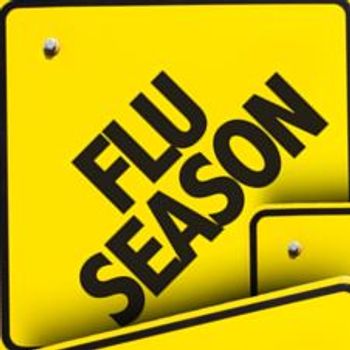
Cold Virus Has Nasty Side in Children
NASHVILLE, Tenn. -- In a year-long study, more than one in four children admitted to the hospital with acute respiratory symptoms had a rhinovirus infection, according to researchers here.
NASHVILLE, Tenn., Feb. 22 -- In a year-long study, more than one in four children admitted to the hospital with acute respiratory symptoms had a rhinovirus infection, according to researchers here.
Among children younger than five years old in two U.S. counties, nearly five hospitalizations per 1,000 children were associated with rhinovirus, according to Kathryn Miller, M.D., of Vanderbilt University, and colleagues at the CDC and the University of Rochester (N.Y.).
The prospective, population-based study detected rhinovirus in 26% of the children, compared with respiratory syncytial virus -- usually considered the major cause of acute respiratory infections in infants and children -- at 20%, the researchers reported in the March 15 issue of the Journal of Infectious Diseases.
The rate of rhinovirus infection was highest in children with a history of asthma and wheezing, the researchers said, although it remained unclear whether children predisposed to asthma are more likely to be infected with rhinovirus or whether rhinovirus infection leads to more severe disease.
The researchers used data from the CDC's New Vaccine Surveillance Network for prospective surveillance among children younger than five admitted with acute respiratory symptoms or fever from Oct. 1, 2000 through Sept. 30, 2001 to hospitals in Davidson County, Tenn. (which includes Nashville) and Monroe County, N.Y., (which includes Rochester).
Over the year of the study, 812 children were eligible and 592 were enrolled. Data collected included nasal and throat swabs for viral culture and polymerase chain reaction testing.
The study found:
- 156 of the 592 children (26%) were positive for rhinovirus, representing 4.8 hospitalizations per 1,000 children.
- Among infants zero to five months, the rate was 17.6 per 1,000, compared to 6.0 for six- to 23-month-olds, and 2.0 for 24- to 59-month-olds. All comparisons between age groups were statistically significant at P
"The conclusion that these clinical syndromes were caused by rhinovirus should be approached with caution," Dr. Turner said in an accompanying commentary.
But, he added, "the increased diagnostic sensitivity provided by (polymerase chain reaction testing) is changing" the perception that rhinoviruses have few medical consequences, and the report by Dr. Miller and colleagues should stimulate more research to understand the relationship between rhinovirus and serious illness.
A limitation of the study pointed out by the authors is "that we only evaluated rhinovirus during a single year, and the seasonality may not reflect the rates in other years or other geographic areas."
Newsletter
Enhance your clinical practice with the Patient Care newsletter, offering the latest evidence-based guidelines, diagnostic insights, and treatment strategies for primary care physicians.



















































































































































































































































































